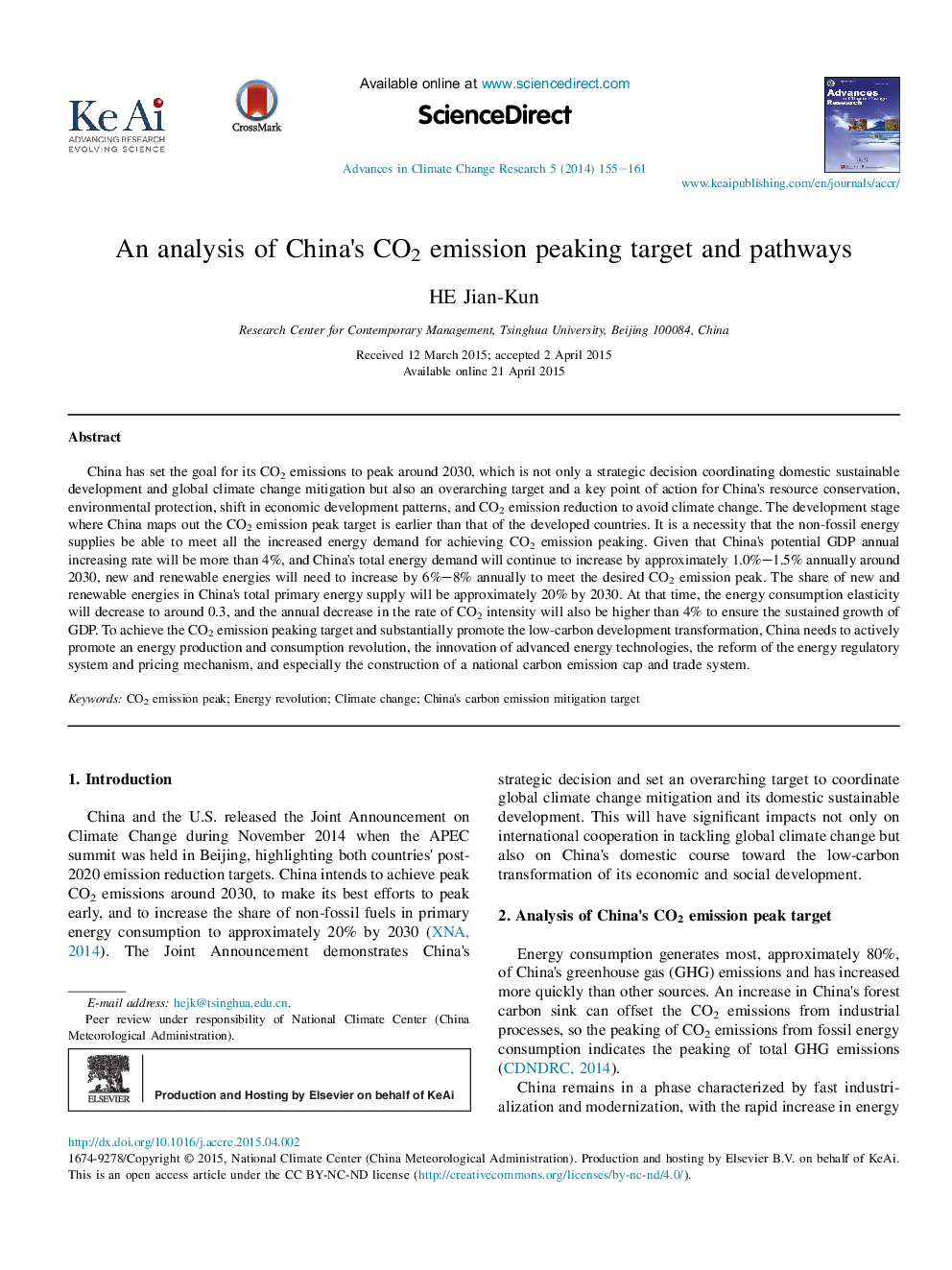| Article ID | Journal | Published Year | Pages | File Type |
|---|---|---|---|---|
| 4673606 | Advances in Climate Change Research | 2014 | 7 Pages |
China has set the goal for its CO2 emissions to peak around 2030, which is not only a strategic decision coordinating domestic sustainable development and global climate change mitigation but also an overarching target and a key point of action for China's resource conservation, environmental protection, shift in economic development patterns, and CO2 emission reduction to avoid climate change. The development stage where China maps out the CO2 emission peak target is earlier than that of the developed countries. It is a necessity that the non-fossil energy supplies be able to meet all the increased energy demand for achieving CO2 emission peaking. Given that China's potential GDP annual increasing rate will be more than 4%, and China's total energy demand will continue to increase by approximately 1.0%–1.5% annually around 2030, new and renewable energies will need to increase by 6%–8% annually to meet the desired CO2 emission peak. The share of new and renewable energies in China's total primary energy supply will be approximately 20% by 2030. At that time, the energy consumption elasticity will decrease to around 0.3, and the annual decrease in the rate of CO2 intensity will also be higher than 4% to ensure the sustained growth of GDP. To achieve the CO2 emission peaking target and substantially promote the low-carbon development transformation, China needs to actively promote an energy production and consumption revolution, the innovation of advanced energy technologies, the reform of the energy regulatory system and pricing mechanism, and especially the construction of a national carbon emission cap and trade system.
